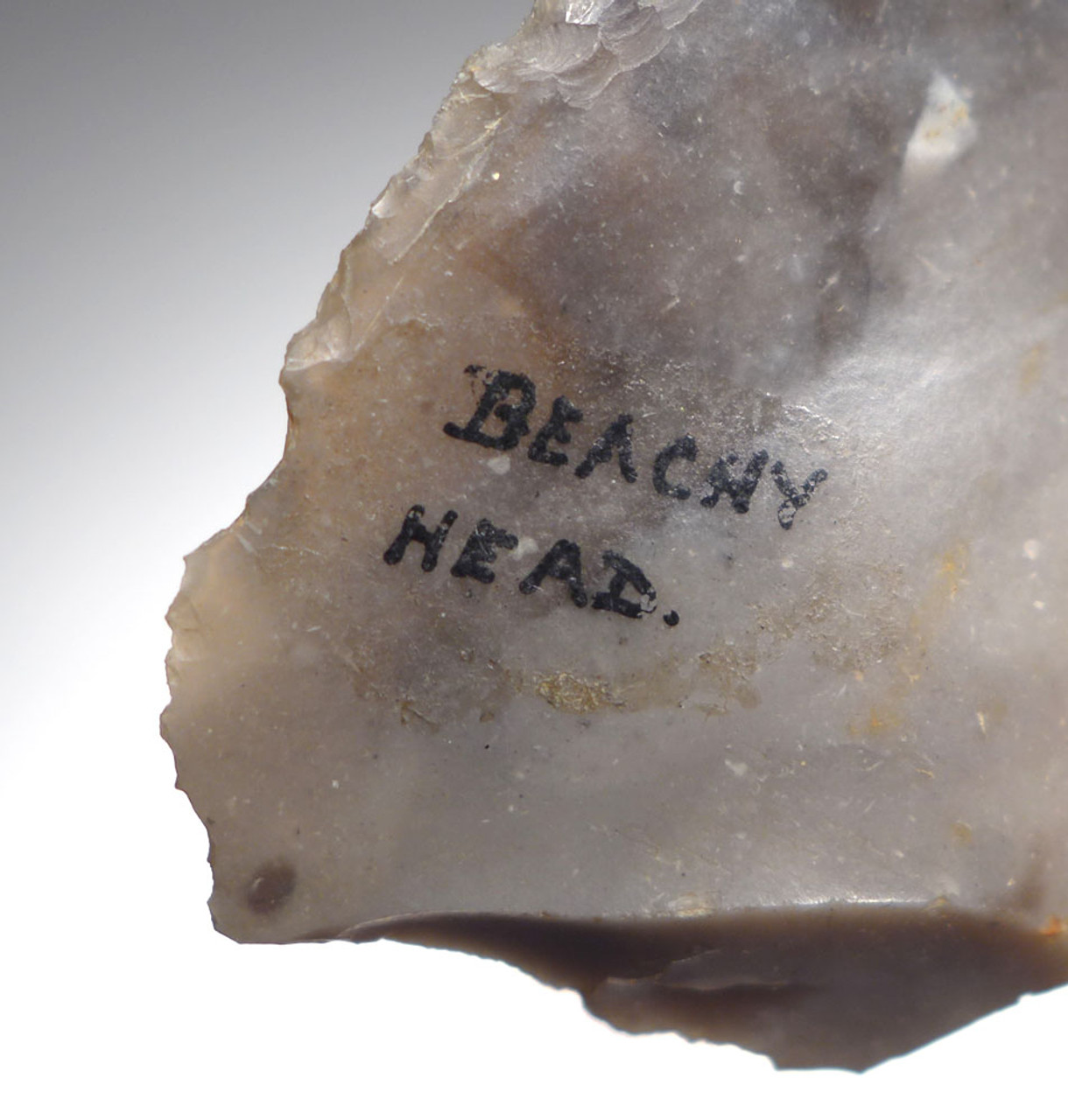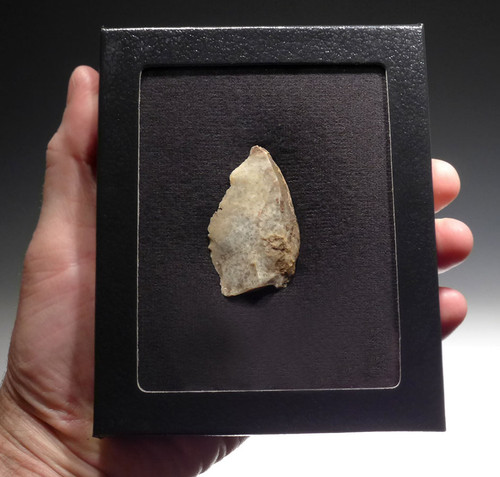Product Description
SEE MORE MESOLITHIC TOOLS AND ARTIFACTS
By the time the Mesolithic Tool Tradition arrived, the flake tools were highly advanced and achieved the peak of human tool miniaturization. The arrowhead was first emerging and smaller spearhead projectile points than earlier periods, were being produced. This exceptional and rare flint spearhead dates to the Mesolithic Period. It was found at Beachy Head, East Sussex, England. Made from a unifacial point by using the Levallois technique, it features a prominent bulb of percussion where it was struck from a flint core. A central rib runs down the center. The edges were lightly shaped to form its pointed shape making it an ideal projectile point to haft onto the end of a wooden shaft to make a spear or arrow.
It is believed that during the Mesolithic Age, nomadic hunters arrived in Sussex from Europe. At the time (8000 BC), Britain was still connected to the continent, however the ice sheets over northern Europe were melting rapidly and causing the gradual rising of sea levels, which eventually led to the forming of the Straits of Dover, effectively cutting off the Mesolithic people of Sussex from the continent. There have been archaeological finds from these people, mostly in the central area to the north of the Downs. Stone knives, scrapers, arrow heads and other tools have been found.
Original ground minerals and sediment are still intact in hinge fractures - an indicator ONLY seen in AUTHENTIC specimens. This Mesolithic artifact is a supreme example of the workmanship of a skilled HUNTER-GATHERER tool maker during Europe's final Ice Age.
HISTORY
Mesolithic people occupied Britain by around 9,000 BC, and it has been occupied ever since. By 8000 BC temperatures were higher than today, and birch woodlands spread rapidly, but there was a cold spell around 6,200 BC which lasted about 150 years. The plains of Doggerland were thought to have finally been submerged around 6500 to 6000 BC, but recent evidence suggests that the bridge may have lasted until between 5800 and 5400 BC, and possibly as late as 3800 BC.
The warmer climate changed the arctic environment to one of pine, birch and alder forest; this less open landscape was less conducive to the large herds of reindeer and wild horse that had previously sustained humans. Those animals were replaced in people's diets by pig and less social animals such as elk, red deer, roe deer, wild boar and aurochs (wild cattle), which would have required different hunting techniques. Tools changed to incorporate barbs which could snag the flesh of an animal, making it harder for it to escape alive. Tiny microliths were developed for hafting onto harpoons and spears. Woodworking tools such as adzes appear in the archaeological record, although some flint blade types remained similar to their Palaeolithic predecessors. The dog was domesticated because of its benefits during hunting, and the wetland environments created by the warmer weather would have been a rich source of fish and game.
It is likely that these environmental changes were accompanied by social changes. Humans spread and reached the far north of Scotland during this period. The older view of Mesolithic Britons as nomadic is now being replaced with a more complex picture of seasonal occupation or, in some cases, permanent occupation. Travel distances seem to have become shorter, typically with movement between high and low ground.
 US DOLLAR
US DOLLAR
 EURO
EURO
 AUSTRALIAN DOLLAR
AUSTRALIAN DOLLAR
 CANADIAN DOLLAR
CANADIAN DOLLAR
 POUND STERLING
POUND STERLING


















